As parents, we want our children to have fun while learning and growing. Toys are a vital part of a child’s development, stimulating the mind and encouraging physical activity. But choosing the right toy can be overwhelming, with so many options available.
In this article, we will help you navigate through the diverse world of toys and select the best age-appropriate options for your child’s learning and enjoyment. From infants to school-aged children, we have a wide range of toys that foster imagination, creativity, and fun.
Key Takeaways:
- The right toys can positively impact a child’s growth and development, fostering learning, imagination, and fun.
- Age-appropriate toys must suit a child’s cognitive and physical abilities.
- Toys must be carefully selected based on a child’s interests, needs, and learning styles.
- Outdoor play and technology-based toys offer unique learning opportunities for children.
- Educational board games and puzzles can encourage social interaction and critical thinking skills.
The Importance of Toys in Child Development
Playing is an essential aspect of a child’s growth, and toys are a crucial component of their playtime. Toys offer not only entertainment but also promote learning and aid in the development of cognitive, physical, social, and emotional skills.
When children play with toys, they learn problem-solving, decision-making, and critical thinking skills. For instance, puzzles require concentration and problem-solving, while building blocks promote spatial reasoning and imagination.
Physical toys such as balls, bikes, and slides encourage physical activity and motor skills development. Socially, toys promote communication and cooperation, creating opportunities for children to interact with others and develop their social skills.
Emotionally, toys provide comfort and can be used for self-expression. For example, dolls and stuffed animals can be hugged, cared for, and used to express feelings.
Toys offer so much more than just entertainment, and it’s crucial to provide children with age-appropriate toys that offer a balance of fun and learning.
The Science Behind Play
The importance of play and toys in child development is backed by science. According to the American Academy of Pediatrics, playing is an essential factor in healthy brain development. Playing with toys stimulates different parts of the brain, allowing children to learn and develop new skills. It also relieves stress and helps with emotional regulation.
Choosing the Right Toys
When choosing toys, it’s essential to consider age-appropriateness, safety, and the child’s interests and developmental needs. Avoid toys with small parts that could be a choking hazard, and make sure they meet safety standards.
| Age Group | Recommended Toys |
|---|---|
| Infants (0-12 months) | Rattles, teething toys, soft plush toys, mobiles, mirrors |
| Toddlers (1-3 years) | Building blocks, dolls, stuffed animals, ride-on toys, shape sorters, playsets |
| Preschoolers (3-5 years) | Art supplies, puzzles, board games, pretend play toys, action figures, musical instruments |
| School-Aged Kids (6-10 years) | STEM toys, construction sets, strategy games, sports equipment, books |
By providing children with the right toys, parents can help enhance their development and make learning more enjoyable.
Toys for Infants (0-12 Months)
During the first year of life, infants experience significant growth and development. Toys can play a crucial role in fostering their cognitive and physical abilities. Here are some age-appropriate toys that can entertain and engage infants:
| Toy Name | Description |
|---|---|
| Soft toys | Stuffed animals or other fabric toys can provide comfort and a sense of security to infants. They can also stimulate their senses and develop their motor skills through grasping and manipulating the toy. |
| Rattles | The sound of rattles can catch infants’ attention and encourage them to reach and grasp. This helps in developing their hand-eye coordination and fine motor skills. |
| Activity gyms | Activity gyms with hanging toys and mirrors can provide visual and tactile stimulation to infants. This helps in their sensory development and encourages them to reach out and interact with the toys. |
| Teething toys | Teething toys provide relief for infants who are starting to develop their first teeth. These toys are made with soft and chewable materials that soothe their sore gums and develop their oral motor skills. |
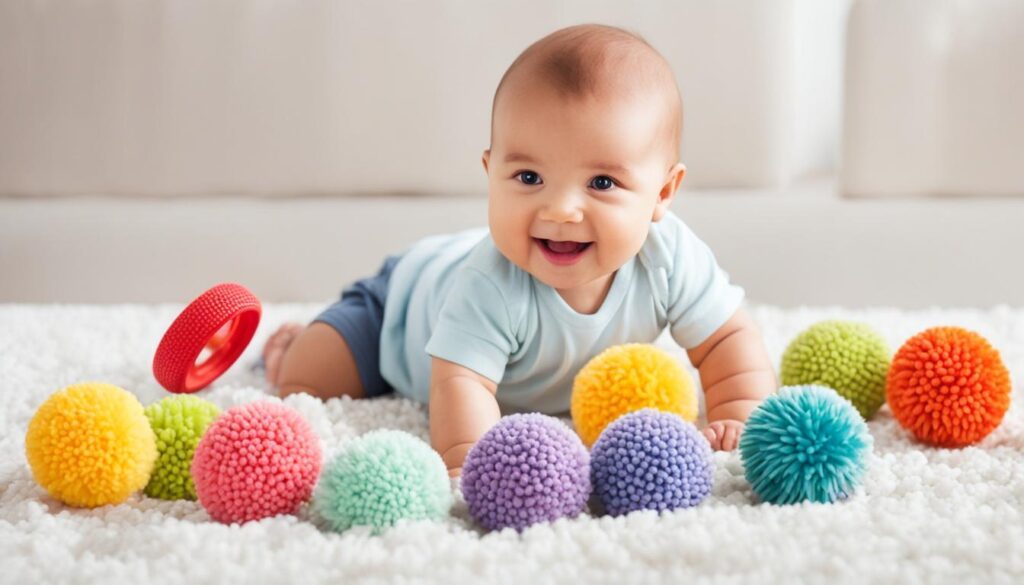
“Toys are not just playthings. They can teach, inspire and engage infants during their most formative years.”
Choosing the right toys for infants can enhance their sensory, cognitive, and physical development. These toys can provide a source of entertainment and fun for infants, all while supporting their growth.
Toys for Toddlers (1-3 Years)
Toddlers are natural explorers with an insatiable curiosity to learn. As parents, providing the right toys can significantly aid your toddler’s cognitive, physical, social and emotional growth. Toys should foster their creativity, develop their fine and gross motor skills, and encourage imaginative play. Here are some of the best toys for toddlers between one and three years of age:
| Toy | Description |
|---|---|
| Shape sorters | Form-fitting puzzles help toddlers learn shapes and colors while promoting problem-solving skills. |
| Stacking blocks | Colorful blocks of various sizes that help in the development of fine and gross motor skills, plus early math and engineering skills as children learn to build. |
| Pretend play toys | Whether it’s a toy kitchen or tool bench, these toys encourage imaginative play and allow toddlers to mimic what they see their parents doing every day. |
| Bath toys | Designed to keep toddlers entertained during bath time, these toys help in tactile exploration and development of cause-and-effect reasoning. |
| Ride-on toys | Push and ride-on toys with non-slip wheels can improve balance, coordination, and gross motor skills. Safe, durable options include scooters, tricycles, and wagons. |
Consider providing your toddlers with toys that aid in their language development, such as talking, musical, or storybook toys. It’s important to keep safety in mind when choosing toys. Avoid toys with small parts that could be a choking hazard. Also, ensure that the toys are easy to clean and made with non-toxic materials.
Toys for Preschoolers (3-5 Years)
Preschoolers are enthusiastic learners who are looking for engaging and fun activities. At this age, children are developing their cognitive and social skills. Therefore, choosing the right toys is crucial for their growth and development.
One of the best types of toys for preschoolers is those that promote problem-solving. Puzzles, counting games, and shape sorters are all great options. These toys aid in the development of critical thinking skills and improve hand-eye coordination.
Creativity is another important aspect of development in preschoolers. Drawing, building with blocks, and playing with playdough are all great ways to encourage creativity and imagination. Art supplies, such as crayons, markers, and paints, are perfect for encouraging self-expression.
Social interactions are crucial in the development of children’s social skills. Toys that promote group play and sharing can improve a child’s ability to communicate and work together. Board games, such as Candy Land and Chutes and Ladders, are perfect for encouraging social interactions and teaching preschoolers how to take turns.
Toys for Preschoolers Table
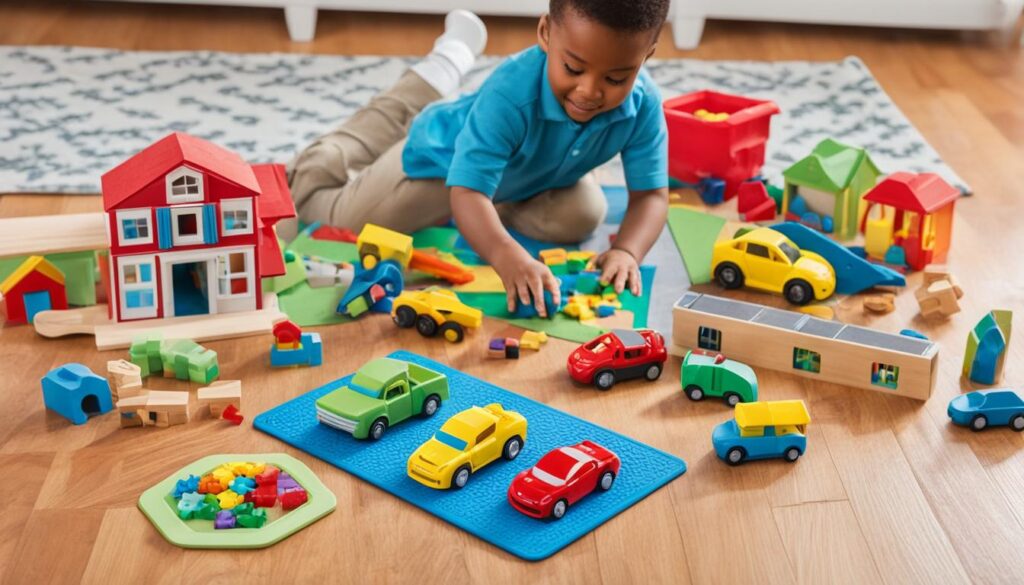
| Toy | Description |
|---|---|
| Building Blocks | Blocks of different shapes and colors to encourage creativity and imagination. |
| Puzzles | Age-appropriate puzzles with varying levels of difficulty to promote problem-solving skills. |
| Art supplies | Crayons, markers, paints, and paper to encourage self-expression and creativity. |
| Playdough | Soft, pliable dough to mold and create different shapes and objects. |
| Board games | Games that promote social interactions and teach children how to take turns. |
Choosing the right toys for your preschooler can be challenging, but keeping their interests and developmental needs in mind can make the process smoother. By providing toys that promote problem-solving, creativity, and social interactions, you can help your child grow and learn while having fun.
Toys for School-Aged Kids (6-10 Years)
School-aged kids love toys that challenge their minds and encourage independent exploration. At this age, they’re developing critical thinking skills, and toys that stimulate their creativity will help foster their intellectual growth. We recommend selecting age-appropriate toys that align with their cognitive abilities and interests to enhance their learning experience.
STEM (Science, Technology, Engineering, and Mathematics) toys are an excellent option for school-aged kids, as they offer educational and exciting playtime. Building and construction sets, like LEGO and K’NEX, are also great for kids who enjoy hands-on activities and problem-solving.
Board games are another entertaining way to promote critical thinking and social interaction among children. Games like Monopoly, Scrabble, and Chess offer a fun way for kids to learn about math, vocabulary, and strategic thinking while enjoying quality time with their friends and family.
Here are some more examples of the best toys for school-aged kids:
| Toy | Age Range | Description |
|---|---|---|
| ThinkFun Gravity Maze | 8+ | A marble run logic game that challenges kids to build a path that carries the marble to its target |
| IQ Builder Building Set | 5+ | A construction set that promotes motor skills and spatial reasoning |
| Sequence for Kids | 4-6 | A game that encourages pattern recognition and strategic thinking |
Remember, finding the right toys for your child’s age and interests can make a significant difference in their learning and development. Encourage them to explore, create, and learn through play.
Technology-Based Toys and Their Benefits
Technology-based toys are becoming increasingly popular, and for a good reason. They offer a unique opportunity for children to learn and develop their skills in a fun and engaging way. Here are some of the benefits of technology-based toys:
| Benefits | Description |
|---|---|
| Improved Problem-Solving Skills | Technology-based toys require children to think critically and solve problems, which can help develop their problem-solving skills. |
| Enhanced Creativity | Many technology-based toys allow children to be creative and express themselves, honing their creativity skills. |
| Increased Engagement | Children are more likely to be engaged and interested when using technology-based toys, making learning fun and enjoyable. |
| Interactive Learning | Technology-based toys can provide a more interactive and immersive learning experience, allowing children to learn by doing. |
| Early Exposure to Technology | Introducing children to technology at an early age can help equip them with the digital skills they will need in the future. |
Some great technology-based toys for children include:
- LEGO Mindstorms: A robotics kit that allows children to build and program their own robots.
- Osmo Genius Kit: A kit that uses an iPad to teach children math, spelling, and problem-solving skills.
- VTech KidiZoom Smartwatch DX2: A smartwatch that allows children to take photos, play games, and learn to tell time.
As technology continues to advance, so will the options for technology-based toys. It’s important to keep in mind the benefits these toys can offer and to choose ones that align with your child’s interests and learning needs.
Outdoor Toys for Active Play
Spending time outdoors is vital for children’s growth and development. Not only does it provide a natural balance to screen time, but it also promotes physical activity and encourages active play. In this section, we will showcase some of the best outdoor toys that promote active play and exploration.
Here are some toys that will help your child stay active:
| Toy | Description |
|---|---|
| Jump Rope | A classic toy that promotes cardiovascular endurance and coordination. |
| Bike | Riding a bike is a fun way for children to explore their surroundings and improve their gross motor skills. |
| Outdoor Explorer Kit | A kit that includes items such as binoculars, compass, and magnifying glass, to encourage children to explore and discover nature. |
| Swing Set | A classic outdoor toy that promotes upper body strength and coordination. |
| Water Toys | Toys such as water guns, water balloons, and sprinklers provide a fun and refreshing way to stay active and cool during hot summer days. |
Encouraging children to engage in outdoor play not only promotes physical health but also cognitive growth. Active play fosters creativity, social interaction, and problem-solving skills that are essential for children’s development.
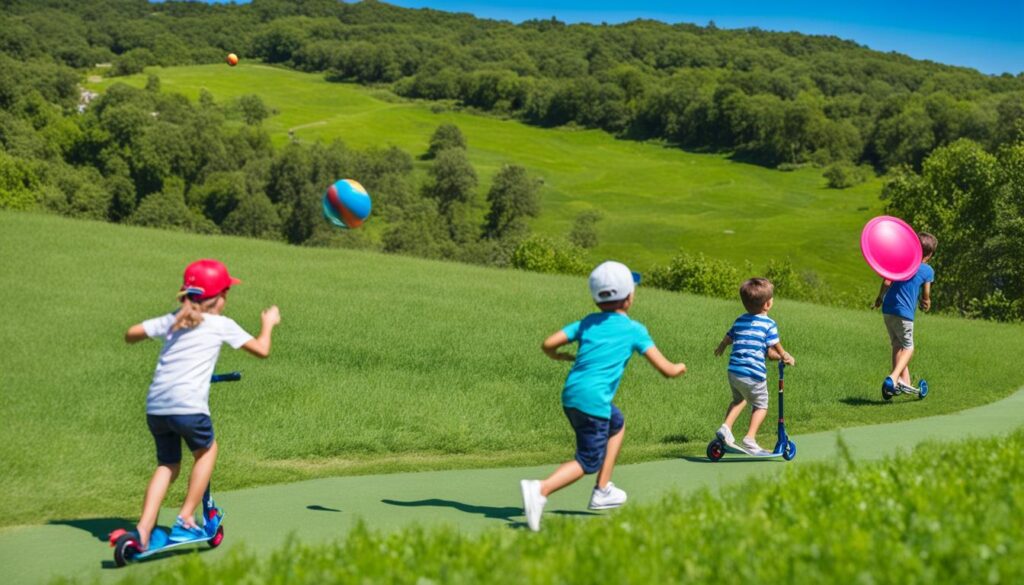
Educational Board Games and Puzzles
Board games and puzzles are immersive tools that can instill vital skills in children while they play. They can help kids develop their problem-solving, critical thinking, and decision-making abilities while also teaching them about teamwork and socializing. We have curated a list of the best educational board games and puzzles that cater to different age groups, aligning with their abilities and interests.
| Age Group | Board Games | Puzzles |
|---|---|---|
| 3-5 years | Hoot Owl Hoot! | 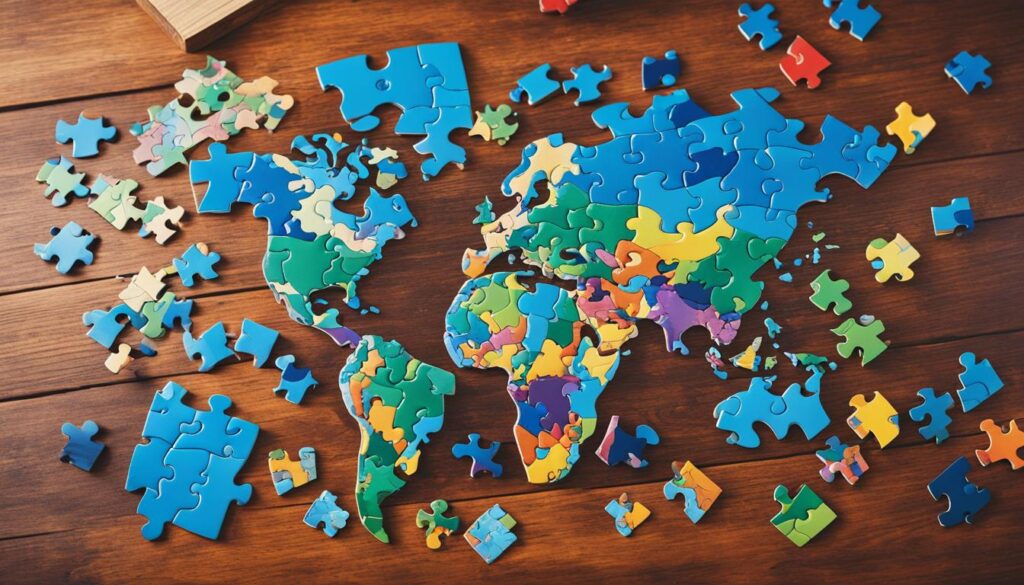 |
| 6-10 years | SET | Flip-O-Storic |
| 11-14 years | CodeNames | The Earth Puzzle |
| 15+ years | Pandemic Legacy: Season 0 | Ghibli My Neighbor Totoro 500 Piece Jigsaw Puzzles |
3-5 years
Hoot Owl Hoot! is a cooperative game that fosters teamwork and critical thinking. The game involves players working together to help the owls fly back to their nest before sunrise. It is an easy-to-learn game that promotes color recognition, counting, and basic strategy.
Puzzles with simple designs and sturdy pieces are recommended for children in this age group. They help build fine motor skills and visual-spatial abilities while keeping things interesting. Our top pick for puzzles is the Ravensburger Farm Animals Super Sized Floor Puzzle which has large, colorful pieces that make it easy for children to handle.
6-10 years
SET is a fast-paced card game that teaches pattern recognition and visual perception skills. The game involves players identifying and matching sets of cards that have similar symbols, colors, or shapes.
The Flip-O-Storic puzzle series is an innovative way to help children learn about history while having fun. The puzzles, which feature famous landmarks and cities, consist of two sides that reveal different scenes from the past and present.
11-14 years
CodeNames is a competitive word association game that helps children enhance their creative thinking and communication skills. The game involves players giving one-word clues to their teammates, helping them identify the correct words from a grid while avoiding the opposing team’s words.
The Earth Puzzle is a challenging 1000-piece puzzle that provides kids with insights into the geography and topography of the planet from a unique perspective. As children assemble the map, they learn about various landmarks, mountains, and oceans that make our Earth extraordinary.
15+ years
Pandemic Legacy: Season 0 is a dynamic board game that involves players working together to stop the outbreak of a deadly virus. This challenging game requires players to utilize their critical thinking, problem-solving, and communication skills to save the world.
Ghibli My Neighbor Totoro 500 Piece Jigsaw Puzzles is an aesthetically pleasing puzzle that features beautiful artwork by Studio Ghibli from the classic film “My Neighbor Totoro.” The puzzle provides a relaxing yet stimulating experience for puzzle enthusiasts, encouraging them to pursue their hobby while admiring beautiful art.
Conclusion: Choosing the Right Toys for Your Kids
After exploring the best age-appropriate toys for kids, it’s clear that toys play a crucial role in child development. Choosing the right toys for your child can positively impact their growth and help them develop essential skills while having fun.
Remember to consider your child’s age, interests, and learning needs when selecting toys. For infants, choose toys that stimulate their senses and help with motor skill development. Toddlers benefit from toys that encourage imaginative play, promote language development, and aid motor skill development. Preschoolers benefit from toys that promote problem-solving, creativity, and social interactions. School-aged kids enjoy challenging toys that align with their cognitive abilities and encourage independent exploration.
Technology-based toys offer unique learning opportunities, while outdoor toys encourage physical development and exploration. And, don’t forget about educational board games and puzzles, which offer a fun and interactive way for kids to learn and develop important skills.
Overall, providing your child with the right toys can help foster their growth in many different areas, from cognitive and physical development to social and emotional skills. So, choose wisely and watch your child’s imagination and creativity soar!
Keywords: conclusion, toys
FAQ
What are the best toys for kids?
The best toys for kids are those that offer a combination of fun and learning. These toys are carefully selected to suit different age groups and provide an educational experience through play.
How do toys contribute to child development?
Toys play a crucial role in a child’s development by promoting cognitive, physical, social, and emotional growth.
What toys are suitable for infants (0-12 months)?
Infants require toys that stimulate their senses and aid in their motor skill development. Age-appropriate toys that can entertain and engage infants are recommended.
Which toys are suitable for toddlers (1-3 years)?
Toddlers benefit from toys that encourage imaginative play, promote fine and gross motor skills, and aid in language development.
What toys are recommended for preschoolers (3-5 years)?
Preschoolers benefit from toys that promote problem-solving, creativity, and social interactions.
What toys are suitable for school-aged kids (6-10 years)?
School-aged kids benefit from toys that stimulate critical thinking, foster creativity, and encourage independent exploration.
What are the benefits of technology-based toys?
Technology-based toys provide unique learning opportunities for children and enhance their cognitive development.
What are some outdoor toys for active play?
Outdoor toys encourage physical activity and exploration. There are various options available to promote active play.
Are there any recommended educational board games and puzzles?
Board games and puzzles offer an interactive and engaging way for children to learn and develop important skills. There are educational options available for different age groups.
Why is choosing the right toy important?
Choosing the right toy is important as it can positively impact a child’s growth and development. By considering their age, interests, and learning needs, parents can provide toys that foster learning, creativity, and fun.
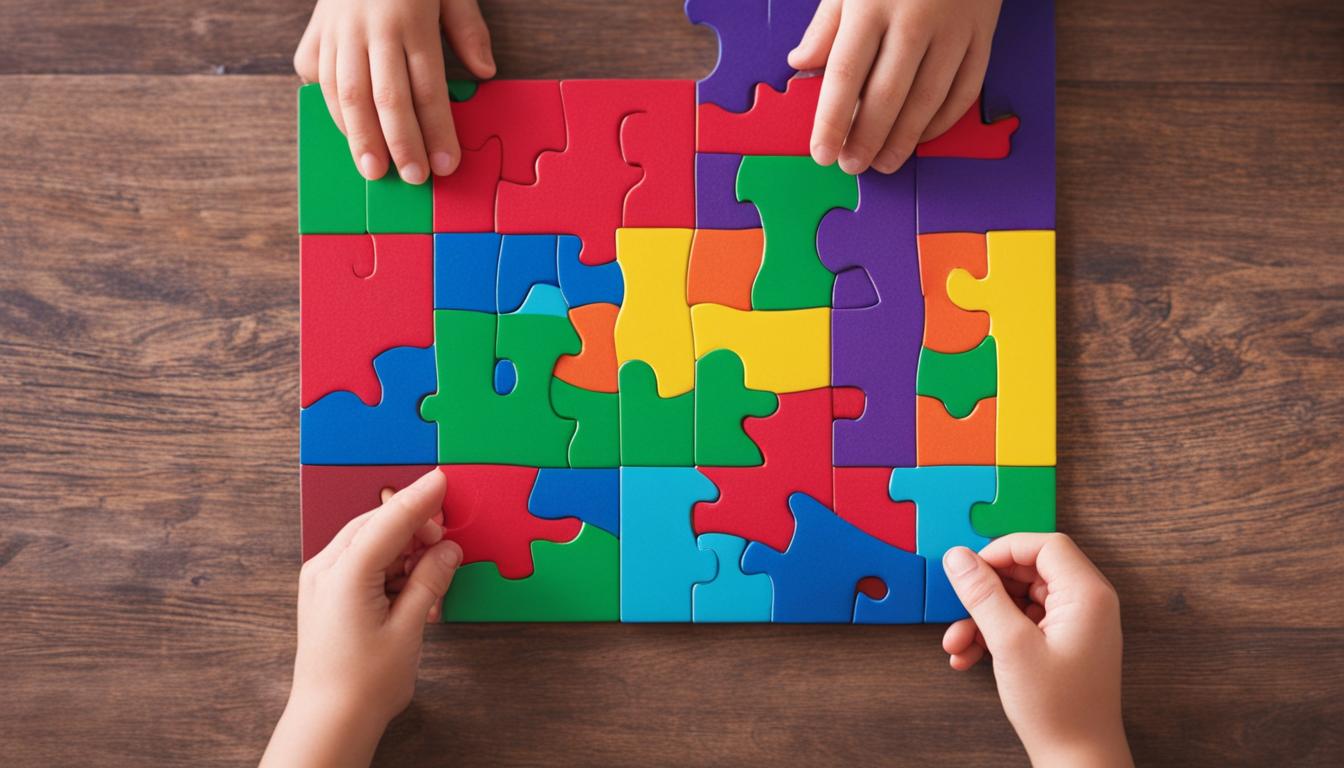
Lovely, very cool
linetogel
linetogel
Incredible, well done
Impressive, congrats
linetogel
nice content!nice history!! boba 😀
Magnificent, wonderful.
Fabulous, well executed
wow, amazing
Outstanding, kudos
Amazing, nice one
wow, amazing
wow, amazing
wow, amazing